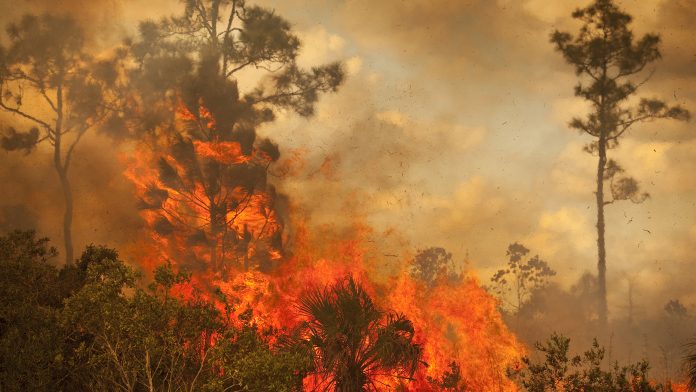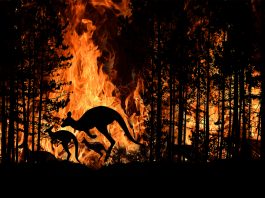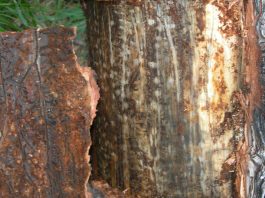Governments are called to radically shift their investments to focus on the prevention and vigilance to combat rising numbers of global wildfires.
Climate change and land-use change are projected to create an upsurge in wildfires, resulting in them occurring more frequently and being more intense. A global increase of extreme fires is estimated at up to 14% by 2030, 30% by the end of 2050, and 50% by the end of the century, according to a new report by the UN Environment Programme (UNEP) and GRID-Arendal.
Therefore, the paper calls for a radical change in government spending on wildfires, shifting their investments from reaction and response to prevention and preparedness. The report, Spreading like Wildfire: The Rising Threat of Extraordinary Landscape Fires, reveals an elevated risk even for the Arctic and other regions that were previously unaffected by wildfires.
The report is released before representatives of 193 nations convene in Nairobi for the resumed 5th session of the UN Environment Assembly (UNEA-5.2), between 28 February and 2 March, 2022.
‘Fire Ready Formula’
The publication calls on governments to adopt a new ‘Fire Ready Formula,’ with two-thirds of spending devoted to planning, prevention, and recovery, with one third left for response. Currently, direct responses to wildfires typically receive over half of related expenditures, while planning and prevention receive less than 1%.
To prevent fires, researchers call for a combination of data and science-based monitoring systems with indigenous knowledge, and for a stronger regional and international cooperation.
“Current government responses to wildfires are often putting money in the wrong place,” commented Inger Andersen, UNEP Executive Director. “Those emergency service workers and firefighters on the frontlines who are risking their lives to fight forest wildfires need to be supported. We have to minimise the risk of extreme wildfires by being better prepared: invest more in fire risk reduction, work with local communities, and strengthen global commitment to fight climate change.”
Wildfires devastating effects
Wildfires disproportionately affect the world’s poorest nations. With an impact that extends for days, weeks and even years after the flames subside, they impede progress towards the UN Sustainable Development Goals and deepen social inequalities:
- People’s health is directly affected by inhaling wildfire smoke, causing respiratory and cardiovascular impacts and increased health effects for the most vulnerable;
- The economic costs of rebuilding after areas are struck by wildfires can be beyond the means of low-income countries;
- Watersheds are degraded by wildfires’ pollutants; they also can lead to soil erosion causing more problems for waterways; and
- Wastes left behind are often highly contaminated and require appropriate disposal.
Wildfires and climate change are mutually exacerbating. Wildfires are made worse by climate change through increased drought, high air temperatures, low relative humidity, lightning, and strong winds resulting in hotter, drier, and longer fire seasons. At the same time, climate change is made worse by wildfires, mostly by ravaging sensitive and carbon-rich ecosystems like peatlands and rainforests. This turns landscapes into tinderboxes, making it harder to halt rising temperatures.
The environmental and ecological effects
Wildlife and its natural habitats are rarely spared from wildfires, pushing some animal and plant species closer to extinction. A recent example is the Australian 2020 bushfires, which is estimated to have wiped out billions of domesticated and wild animals.
Thus, there is a critical need to better understand the behaviour of wildfires. Achieving and sustaining adaptive land and fire management requires a combination of policies, a legal framework and incentives that encourage appropriate land and fire use.
Additionally, the restoration of ecosystems is an important avenue to mitigate the risk of wildfires before they occur and to build back better in their aftermath. Westlands’s restoration and the reintroduction of species such as beavers, peatlands restoration, building at a distance from vegetation, and preserving open space buffers are some examples of the essential investments into prevention, preparedness and recovery.
The report concluded with a call for stronger international standards for the safety and health of firefighters, and for minimising the risks that they face before, during and after operations. This includes raising awareness of the risks of smoke inhalation, minimising the potential for life-threatening entrapments, and providing firefighters with access to adequate hydration, nutrition, rest, and recovery between shifts.









